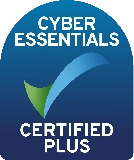Coercive and Controlling Behaviour
Our specialist team of family solicitors support clients who are experiencing controlling or coercive behaviour. Domestic abuse is not limited to physical abuse. It can cover other forms of abusive behaviour including financial abuse, emotional or psychological abuse, threats and intimidation, coercive control and ‘gaslighting’.
What is coercive and controlling behaviour?
“Coercive behaviour” - This refers to an act or pattern of acts of assaults, threats, humiliation and intimidation, or other abuse that is used to harm, punish or frighten someone.
“Controlling behaviour” - This describes a range of acts designed to make a person subordinate and/or dependent by isolating them from sources of support, exploiting their own resources and capacity for personal gain, depriving them of the means needed for independence, resistance and escape, and regulating their everyday behaviour.
As is evident from the above coercive/controlling behaviour can include a wide variety of behaviours, such as:
- Isolation from friends and family – perhaps making it difficult or impossible for the person to go out; removing access to transport or funds or sabotaging relationships with others
- Monitoring activities and movements
- Threatening to harm or kill a person or their child or even themselves
- Threatening to publish information about a person or report that person to the police or authorities such as Social Services
- Damage or threatening damage to property
This type of behaviour is often not limited to one incident but repeated, which has a cumulative effect.
Is coercive control a criminal offence?
Coercive control can be considered a criminal offence if:
- The abuser and victim are personally connected
- The behaviour has a serious effect on the victim, and
the abuser knew or should have known that their behaviour would have a serious effect on the victim.
The abusive behaviour is considered to have a serious effect if:
- It caused the victim to fear on at least two occasions that violence would be used against them, or
- They felt serious alarm or distress and it caused a substantial effect on their usual day-to-day activities (i.e. it changed the way they live, for example how they socialise, care for their children, etc.).
How do the family courts approach coercive control?
Coercive control is considered to be a form of domestic abuse. In appropriate cases, the court might be persuaded to make injunctive orders such as a Non-Molestation Order or Occupation Order.
Issues surrounding coercive control and domestic abuse may have an impact upon arrangements for any children of the relationship, as well as the financial issues that arise when a relationship breaks down. Cases that involve allegations of domestic abuse also need to be addressed and managed sensitively so as to not heighten the risk of harm.
Where domestic abuse (of any kind) is alleged, the family courts have a number of procedures at their disposal to protect the alleged victim and any relevant child or children. Depending upon the issues that need to be resolved, the court might require a fact finding hearing to consider whether the allegations are true. There are also restrictions in place that prevent the alleged abuser directly cross examining the alleged victim.
Get in touch with our domestic abuse solicitors
At Birkett Long our specialist family solicitors will provide sensitive, fast, effective advice and assistance to address any issues involving domestic abuse, both for those experiencing domestic abuse and those alleged to have been abusive.
We are discreet and anything you tell us will be confidential.
Coercive control checklist
Spot the signs! The following are examples of coercive control behaviours.
Remember – you don’t need to tick every item off this list for it to be coercive control. If you feel controlled, scared, isolated and/or threatened, you can seek legal protection.
- Controlling where you go, what you do, what you wear and who you meet or talk to
- Isolating you from your friends and family
- Threatening to hurt you and/or your children
- Controlling your money
- Verbal abuse
- Damaging your home or belongings
- Jealous behaviours, such as intense paranoia, being possessive and accusing you of cheating
- Blackmailing you, such as threatening to reveal personal information or report you to the police
- Sharing sexually intimate photos or videos without your consent (revenge porn)
- Forcing you to do things you don’t want to do, such as sexual activity or criminal activity
- Tracking you - for example using mobile devices and spyware to monitor and control who you talk to, where you go and what you do.









